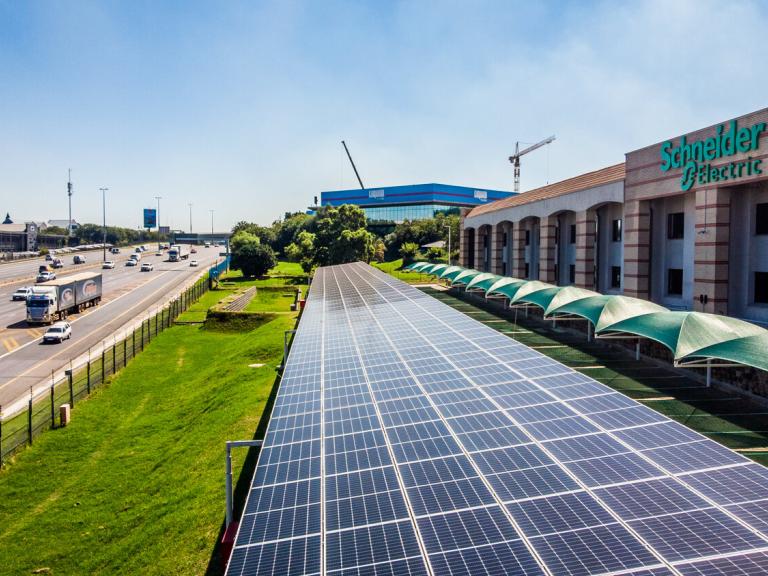-
Last updated on

The Sahel is a textbook example of desertification. With the Great Green Wall, the international community is trying to stop the phenomenon. Photo: the Sahel in Niger. © Shutterstock
We hear quite a lot in the press about the climate conferences - such as the most recent COP26 - but a lot less about the biodiversity conferences. But did you know that conferences on desertification and land degradation also take place regularly? Climate, biodiversity and desertification are in fact the 3 UN Conventions which came out of the historic Earth Summit in Rio de Janeiro in 1992, in other words, the UN Conference on the Environment and Development.
On a regular basis, all the parties - the countries which have ratified the treaty - involved with the 3 conventions meet to discuss their progress. Such a meeting is called, according to the jargon, a Conference of the Parties or COP.
The United Nations Convention to Combat Desertification (UNCCD) is the UN body charged with combating desertification. From 9 to 20 May 2022, the 15th COP will take place in the Ivory Coast. Belgium will be represented there by 3 FPS Foreign Affairs employees: one from their headquarters and 2 from our post in Abidjan.
A huge problem
Desertification and land degradation are a huge problem. After all, soil is the basis of essentials such as food, drinking water, animal feed, fibre, building materials and so on. Yet the soil is still treated extremely carelessly: through excessive ploughing, the use of fertilisers and pesticides, exposure to erosion by wind and rain, annual monocultures etc. And of course also by a huge construction frenzy which still causes masses of land to disappear under a layer of concrete.
Every year, 24 billion tons of fertile soil are lost due to human intervention. Bear in mind that it takes 500 years to form a 2.5 cm layer of fertile soil, and only a few years to destroy that layer. Deforestation - some 13 million hectares annually - also exposes the soil to degradation and erosion. All told, one-third of all land is threatened by desertification.

In addition to the use of fertilisers and pesticides, excessive ploughing also leads to soil degradation. © Shutterstock
National plans
The UN Convention on Desertification aims to put a stop to this. Successive COPs have looked at how we can protect our soils on a global scale. Progress is slow. Yet the promise remains that there should be no net land degradation by 2030, as also expressed by Sustainable Development Goal SDG15.3.
One of the problems is that the countries of the South are not yet far enough along in developing their national plans to combat desertification. Funding is also a thorny issue.
Funding through the GEF
African countries are calling for a separate global fund to prevent and address droughts. This is a legitimate complaint as far as Belgium is concerned, but setting up a separate fund would take a lot of time and energy. That is why our country is advocating, along with the EU, an increase in funding with respect to Early Warning systems for droughts through the Global Environment Facility (GEF), the global financing instrument for all things environmental. One of the 5 themes for which the GEF is responsible is specifically land degradation.
As such, our country has made considerable efforts to add to the pot available to the GEF. That has hopefully worked out. For the 8th programme period (2022-2026) of the GEF (GEF-8), $5.25 billion has been collected so far. That could go up to $5.4 billion. 11.6% of that goes towards land degradation. This is less than the hoped-for 6 billion, but more than the 4 billion for the 7th programme period. Belgium is donating 92.5 million euros to the GEF-8.
Mobilising high-level politicians
A key objective of COP15 involves raising the profile of desertification and the mobilisation of high-level politicians (ministers and heads of state) with regard to this issue. For example, on Day 1, a world summit is planned for the creation of political momentum with regard to desertification. On Day 2, several round tables will continue at the ministerial level.
The conference will highlight a number of themes closely linked to land degradation such as migration, drought and sandstorms. Companies will be encouraged to build principles of sustainable land management into their operations.
The COP is also aiming to deliver a technical guide built around responsible land tenure. After all, today most agricultural workers in the South do not own their land. Only if they have guarantees that they can cultivate the land for a long time will they invest more in that land. Women should also be given official rights to land (use).
Belgium and the Great Green Wall
The world has a lot of catching up to do in order to achieve "neutrality in land degradation" by 2030. Yet there are also bright spots. For example, the African Union, with the support of the international community, aims to complete the Great Green Wall in the Sahel by 2030. Initially, this project consisted of a strip of green, productive landscapes 7,000 km long (from Senegal to Djibouti) and 15 km wide. Meanwhile, the initiative has evolved into a more territorial and regional approach.
Belgium is also doing its bit. Development Co-operation Minister, Meryame Kitir, has allocated 50 million euros to 4 Sahel countries: Senegal, Mali, Niger and Burkina Faso, in addition to a regional component. The aim is to restore in a sustainable way natural ecosystems and to manage better natural resources, including through agro-ecological practices. All projects are fully aligned with the 5 pillars of the Great Green Wall. In Senegal and Niger, operations will begin on 1 May 2022.
Biodiversity and climate
Land degradation is not separate from the other planetary crises involving biodiversity and the climate. After all, biodiversity cannot thrive on barren land. Climate disruption amplifies the phenomenon of decaying soils. On the other hand, such soils release a lot of stored carbon which in turn fuels climate disruption.
Conversely, if we succeed in restoring soils worldwide, 3 billion tons of atmospheric carbon could be stored annually, enough to offset 10% of emissions from energy use. Actions aimed at avoiding, reducing and reversing land degradation can provide one-third of the effort required to limit the rise in temperatures to 2°C by 2030.
A matter of towering urgency
The urgency is immense. The latest report from the international climate panel IPCC makes no bones about it: we can only halve emissions by 2030 and limit warming to 1.5°C if large-scale actions are now taken immediately across all sectors. Neither the coronavirus crisis nor the war in Ukraine should be an excuse to back off.
Land restoration is a crucial tool required to enable a sustainable future for humanity, including food production and security. During the COP15 concerning desertification, Belgium will strongly emphasise that message.
Watch a video on the subject of desertification with images by Yann Arthus-Bertrand (6'35"):
More on Planet

Ridding the world of plastic pollution
A legally binding, ambitious treaty must be concluded by 2024 in order to address plastic pollution. This was the resolution mad...

BIO wants renewable energy for all
The Belgian Investment Company for Developing Countries has a long tradition of investing in renewable energy. In 2022, this amo...

Belgium's climate finance: significant results, but not enough to meet climate challenges
The Special Evaluation Office has conducted a thorough review of Belgian climate finance. Belgium's success is significant, howe...
